Is this placemaking?
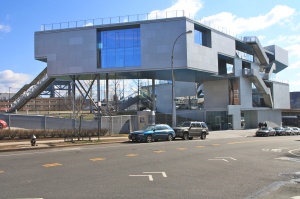
The Campbell Fitness Center at Columbia University’s sports complex at the northern tip of Manhattan looks strange to a lot of people. But the more you know the context–an elevated train rattles past it; industrial uses collide with with residential and institutional ones—the more you appreciate why its unconventional form is so right for its place. The building, on paper, could have been a windowless box, walling off Columbia’s athletic complex from the residential blocks as earlier buildings (and the regrettable new fence) do. Instead it opens views to athletic fields and the hills of the South Bronx beyond, and plays off the grey-metal counterweight of the Broadway Bridge (which is just out of this photo). Its sculpted volume and zigzagging stairs recognize the industrial pragmatism of the surroundings while making a boring, emptied street intersection come to jazzy life.
This building makes its place unique by recognizing and resonating with a messy context, rather than trying hopelessly to tidy it. Yet it does not follow the rigid rules of “Placemaking,” a rhetorical gimmick spreading across the urban-development wonkosphere like kudzu. Placemaking sounds good and everyone wants to jump on the bandwagon.
Unfortunately, Placemaking, as promulgated by its chief advocate, the nonprofit Projects for Public Spaces, is largely bogus, even though PPS rather presumptuously claims it “has the potential to be one of the most transformative ideas of this century.” After you hack through thickets of slogans and vagaries, Placemaking seems to comprise a community-driven process for designing public spaces (streets, sidewalks, plazas, squares, campuses, parks, and so on) that are mixed use, host a variety of activities for diverse audiences, and are well-connected to the larger city or town. All this has been mom & pop, apple-pie stuff in urban planning circles for decades, derived from the valuable 1960s work of the urbanist and author Jane Jacobs and the urban planner William H. “Holly” Whyte. The same ideas energized the 1990s New Urbanism that gave us Neo-historical neighborhoods, a few of them actually good.
Sadly, Placemaking could only gain currency because our building and development processes create so little that is inviting and memorable. America’s default is to assemble standardized real-estate products along roads engineered for auto throughput, and call it a day. Placelessness is so ubiquitous and such second nature that it is actually hard to think about what it takes to make a building or streetscape that’s appealing, that feels as if it belongs.
The tactics PPS advocates long have been baked into the development processes of many cities, though formulaic public design and private development suck the life out of them. Now urban developers have glommed onto the term, because Placemaking sounds like something that could sail through city-review regimes and sell. The trouble is, Placemaking does not itself make real place.
Though PPS claims to have completed projects in more than 3,000 communities and 43 countries, there is not one memorable example shown on its website. You can see some nice ye-olde streetscapes, some red-brick squares with happy children scrawling with chalk on a sidewalk. You’ll see public markets in faux-historical drag that would seem to undercut any claim to placeness or authenticity. But nothing that transforms a strip highway or dead mall into an environment that feels inevitable, extraordinary—that could be nowhere else.
Creating a sense of place, or divining its genius loci, has long been a concern of architects and landscape architects. That’s why truly unique public places are usually created by insightful designers who happen to be good listeners, good observers, and are capable of stirring together the sometimes-conflicting wishes of clients and citizens into a transcendent result none could have anticipated. The smart designers asks: What is this place’s essential uniqueness? Is there an eloquence that is perhaps underlying and needs to be teased out? How do I put something new here that does not screw up the valuable topography, view, history, or use that exists?
Let’s have a look at some actual places that work and some that don’t.
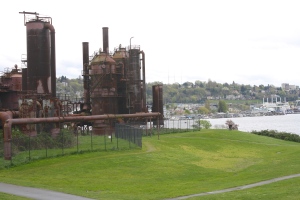
Gasworks Park, Seattle. Landscape architect Richard Haag retained industrial remnants to frame views to the downtown skyline across Lake Union in this conversion of a polluting gasification plant to a park. Preserving industrial archeology was a new idea in the early 1970s, and many citizens objected to it in the community consultation that preceded construction. Haag’s extraordinary insight and tenacity produced what was deemed an instant, unexpected hit in 1975, one of the most influential park designs of the 20th century, and still wildly popular in spite of being neglected and never completely finished. In a PPS-style process, where community input would seem to rule, the park, at best, would have been ordinary.
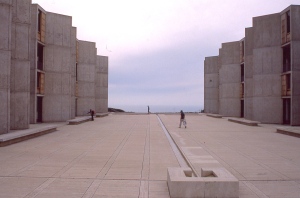
Salk Center, La Jolla, California. The courtyard of this research center is arguably one of the greatest public spaces in the world. It was designed by Louis Kahn with no public input. There is no retail, no bike lanes, no cute kids with balloons, in fact often no one. There is, instead, an extraordinary sublime, created out of stone, sky, sea and a rivulet of water. The Mexican architect Luis Barragán advised Kahn to eliminate planned rows of trees. “If you make this a plaza, you will gain a facade—a facade to the sky,” he said. He was right.

Apple store, New York City. Architect Peter Bohlin describes this store, with a glass roof, furnished only with rows of wooden tables, and open to the street through a full-height glass wall, as akin to a market hall. He transformed a private retail space into an alluring public place through metaphor. You walk by and you almost can’t help walking in, because there are so many people who appear to be doing something interesting. Bohlin is a good observer and a smart listener with a transformative imagination.
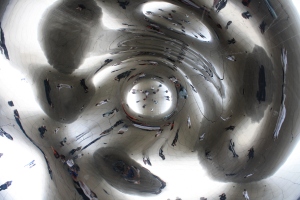
Millennium Park, Chicago: Skidmore Owings & Merrill made a tasteful neo-Beaux Arts formal space for quiet strolling and relaxation atop an open railyard. Millennium Park came alive, though, with monumental artworks by Jaume Plensa and Anish Kapoor, both of which visitors cannot get enough of. A bandshell of curling metal sheets, a serpentine pedestrian bridge, both by Frank Gehry, and a broad terraced garden by landscape architect Kathryn Gustafson have created an extraordinarily magnetic place—almost the only public place in the city equally enjoyed by visitors and Chicagoans alike. None of this was good enough for PPS author Jay Walljasper, who found it soulless, where a “sense of contentment and wonder was a secondary consideration.” And there were too few benches. Must all parks fit the same passive, trees-and-grass mold?
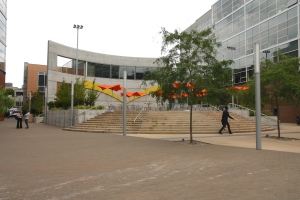
South Lake Union, Seattle. Tech workers stuck in suburban office parks look longingly to South Lake Union, at the edge of the city’s downtown and not far from a waterfront park. Bike racks and trolley? Check. Food trucks? Check. Mid-block pedestrian passageways? Check. South Lake Union is better than isolated suburban glass buildings ringed with parking lots. Yet this enclave built mainly for online retailer Amazon lacks two things: talent and insight. The buildings are clumsy and cheap; the streetscapes dull and enervated, the parklets feeble. This is exactly the kind of brain-dead urbanism checkbox “placemaking” promulgates.
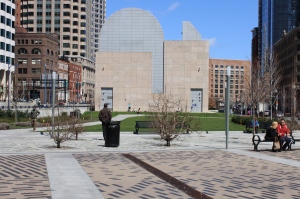
Rose Kennedy Greenway, Boston. The burying of the elevated highway that cut through the center of Boston—its famously expensive Big Dig—created an opportunity to develop a truly transformative sequence of public spaces that would thread the divided city together. But Boston, with endless public input, never came up with a plan to match the opportunity. This city, bursting with intelligence and talent, ended up with an embarrassing, lackluster assortment of lawns, trees, bricks and such empty park gestures as an oversized sun shelter that stares at nothing.
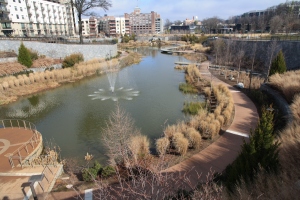
The Atlanta Beltline. A very ambitious project to unite dozens of neighborhoods with a combination of trails, light rail, and parks along a necklace of abandoned rail lines. The project has been slow to progress in spite of enormous public approval and use, and a tsunami of development along the small portions of the project yet completed. While the Historic Fourth Ward Park pictured seems a bit clumsily over-engineered yet under-designed (by Perkins + Will with James Corner Field Operations), other parts too timidly engage the extraordinary variety of found conditions. The jury is still out because there is so much yet to be done, but the potential of the project is so extraordinary that Atlanta should not scrimp on either dollars or imagination.
What are the lessons here? Making great places is a more organic and less mechanical process than PPS makes it out to be. Yes, the public must be involved, and yes some places should be active social mixing bowls. But some places—especially extraordinary natural features—should be left alone. In others, we should recognize that what is unique is sometimes strange (like Gasworks’ rusting ruins). Recall that the rail line that hosts the High Line Park escaped demolition only because two intrepid people cared.
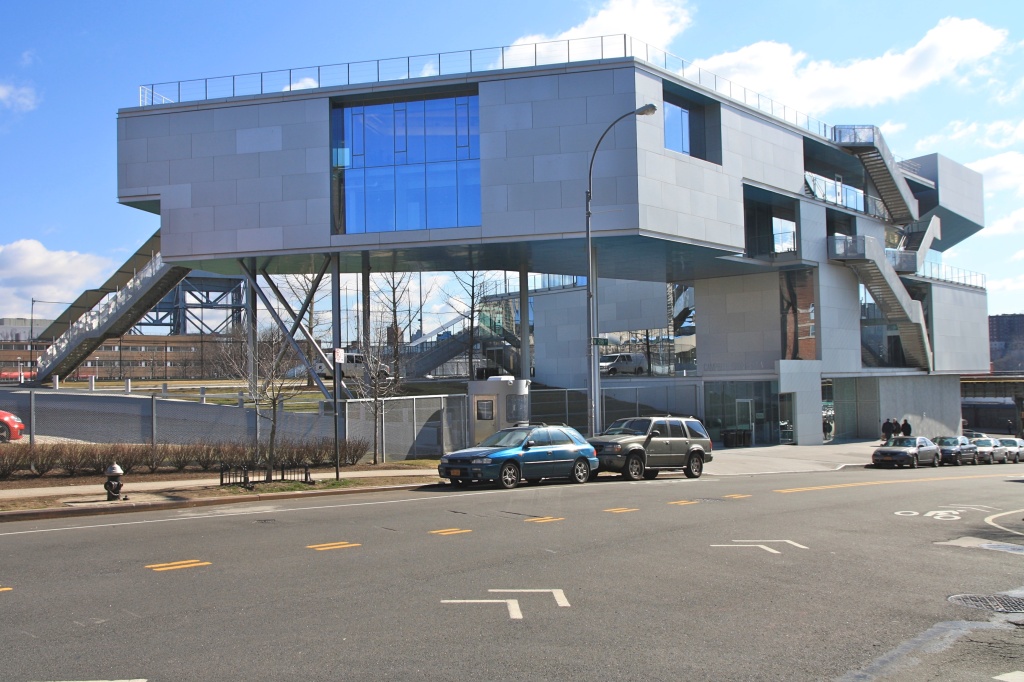
Leave a comment